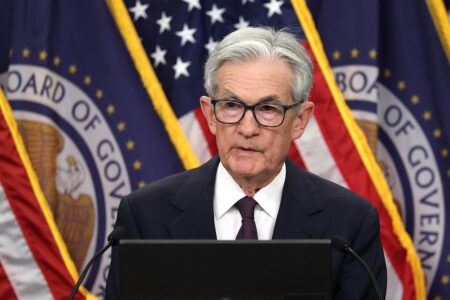David Zybin, founder of MarketMagnetix Media Group.
Economic storms arrive without warning. But smart owners are prepared. Their businesses endure.
I find that the environment for small businesses has never felt more precarious. Inflation pressures, supply chain disruptions, labor market volatility, the AI revolution and shifting consumer behaviors are all helping to create a perfect storm of uncertainty. Yet within this complexity lies opportunity.
What separates businesses that merely survive economic turbulence from those that emerge stronger? The answer isn’t simply having deeper pockets or better luck. It’s about developing an adaptive strategy framework that allows for both defensive positioning and opportunistic growth.
Understanding The Nature Of Economic Uncertainty
Economic uncertainty isn’t simply about downturns. It encompasses unpredictable changes in any direction. Customer spending patterns shift. New competitors emerge. Technologies disrupt. Regulations evolve. I find that the most dangerous assumption a small business can make is that tomorrow will resemble today.
The first step toward strategic resilience is acknowledging that uncertainty itself is a constant. Rather than attempting to predict specific outcomes, successful small businesses build systems that can respond to multiple scenarios.
Consider uncertainty not as a temporary condition to endure but as the operating environment itself. I believe this mental shift helps transform reactive panic into proactive planning.
Financial Fortification Strategies
Cash remains king during economic volatility. Businesses with strong cash positions gain both defensive protection and offensive capabilities when opportunities arise. But building this position requires deliberate action.
Start by conducting a comprehensive cash flow analysis. Identify which revenue streams demonstrate stability versus volatility. Examine expenses through the lens of necessity versus optimization. The goal isn’t merely cost-cutting but strategic resource allocation.
Develop multiple financial scenarios with corresponding action plans. What specific steps would you take if revenue dropped 15%? What about 30%? Having these plans in place before they’re needed prevents reactive decisions made under pressure.
You can also consider establishing or expanding lines of credit while conditions are favorable, before they’re urgently needed. Similarly, review payment terms with both suppliers and customers to optimize your cash conversion cycle.
Financial resilience also means diversifying revenue streams. Businesses overly dependent on a single customer segment, product line or geographic market face heightened vulnerability. Identify opportunities to expand your revenue base without overextending resources.
Operational Flexibility As Competitive Advantage
Fixed costs often become liabilities during economic uncertainty. Therefore, businesses that can scale operations up or down with minimal friction can gain significant advantages over less flexible competitors.
Evaluate your business model for rigidity points. Where are your locked-in, long-term commitments? Which expenses could be converted from fixed to variable? What technologies or partnerships might increase your operational elasticity?
Supply chain vulnerability has emerged as a critical concern for businesses of all sizes. Conduct a supply chain stress test by identifying potential disruption points. Develop contingency relationships with alternative suppliers, especially for critical components.
The workforce represents both a significant cost center and your most valuable asset. Develop staffing models that can flex with business conditions while preserving core capabilities. This might include strategic use of contractors, cross-training employees or implementing flexible scheduling systems.
Technology investments that enhance operational flexibility often pay dividends during uncertain times. Cloud-based systems, automation tools and digital customer engagement platforms can all contribute to business resilience while potentially reducing long-term costs.
Strategic Customer Engagement
Customer behavior changes dramatically during economic shifts. Understanding these changes requires both data and direct dialogue. Implement systems to track evolving customer needs, preferences and price sensitivity.
Resist the temptation to compete solely on price during challenging economic periods. Value perception becomes increasingly important as customers make more deliberate purchasing decisions. Articulate your differentiation clearly and consistently.
Segment your customer base according to things like profitability, loyalty and growth potential. Direct resources toward retaining and expanding relationships with your most valuable customers.
Lastly, consider how your offerings might need to evolve in response to changing economic conditions. Could you introduce more accessible price points while maintaining premium options? Are there adjacent services that would provide additional value to existing customers?
Opportunity Identification Amid Disruption
Economic uncertainty creates displacement. Customer needs shift. Competitors struggle. Talent becomes available. Market gaps emerge. The businesses that thrive during turbulence actively scan for these opportunities.
Develop formal processes for capturing market intelligence. What are customers requesting? Which competitors appear vulnerable? What adjacent markets are experiencing disruption? Regular review of these insights can reveal strategic opportunities.
Maintain investment capacity for opportunistic moves. This might mean preserving cash reserves or establishing dedicated innovation budgets that remain protected even during challenging periods. The ability to act decisively when opportunities arise separates market leaders from followers.
Consider strategic partnerships that expand capabilities without significant capital investment. Other businesses facing similar challenges may be open to collaborative arrangements that create mutual benefits and shared risk.
Talent acquisition represents a significant opportunity during economic uncertainty. Organizations that can attract and retain key capabilities while competitors retrench position themselves for accelerated growth when conditions improve.
Leadership Mindset For Navigating Uncertainty
The psychological burden of leading through uncertainty should not be underestimated. Effective leadership requires balancing a realistic assessment of challenges with confidence in your ability to adapt and overcome.
Transparent communication builds trust during uncertain periods. Share what you know, acknowledge what remains unknown, and articulate the principles guiding your decisions. This transparency extends to both employees and external stakeholders.
Focus organizational attention on factors within your control. Market conditions, regulatory changes, and macroeconomic trends largely exist beyond your influence. Direct energy toward customer relationships, operational excellence, and strategic positioning.
Moving Forward With Strategic Confidence
Economic uncertainty should not paralyze your business’s strategy. In fact, uncertainty, properly harnessed, can become a catalyst for innovation and differentiation. The strategic discipline developed during challenging periods often creates lasting advantages that persist when economic conditions improve.
The path forward requires both courage and prudence. By balancing these seemingly contradictory qualities, small business leaders can transform economic uncertainty from an existential threat into a defining opportunity.
Forbes Business Council is the foremost growth and networking organization for business owners and leaders. Do I qualify?
Read the full article here











